The best settings for Days Gone
Wrecking Ripper camps without the faff of frame drop.
It's been a long time coming, but Sony's Bend studio has finally come through with Days Gone for the PC. That's right, now you can experience all the open world, survival horror action you can handle with ultra-wide monitor support, unlocked frame rates, better field of view, improved draw distances, and an increased level of detail.
And while this all sounds great, now that you have the ability to tweak settings to your heart's content you're going to want to make sure you get them right. You're not going to be able to stand up to the Freaker hordes while the bane of frame-skip runs rampant across your system.
To make sure your nest-whacking, head-cracking, bounty-stacking experience goes as smoothly as possible, we've done some benchmarking on our performance testing rigs, and a couple of gaming laptops, for your convenience. It should give you a good idea of how Days Gone will play on your machine at different resolutions, as well as which settings will make your frame rate sing, without sacrificing too much of the fidelity that makes that gorgeous Oregon hills backdrop feel so real.
So, before you get stuck into speeding around on your Drifter Bike, or inspecting all those superb, bloodstained textures in their 4K glory, we've got the low down on the best settings for Days Gone.
Performance

First off, here's the kind of performance you can expect from Days Gone with different hardware combos, at different resolutions. We started the tests on our mid-range machine—packing an MSI RTX 3060 Ti Ventus 2x and AMD Ryzen 5 5600X—with V-Sync disabled and graphics prioritised, to get a good median going.
The main variable was my ability to re-play the same mission as similarly as possible, as there was no built in benchmark. But I did manage to find a replicable segment that included a whole lotta shooting, fire particle effects, and a forested mountain-side overlook. And I made sure to throw some Molotovs in there for good measure.
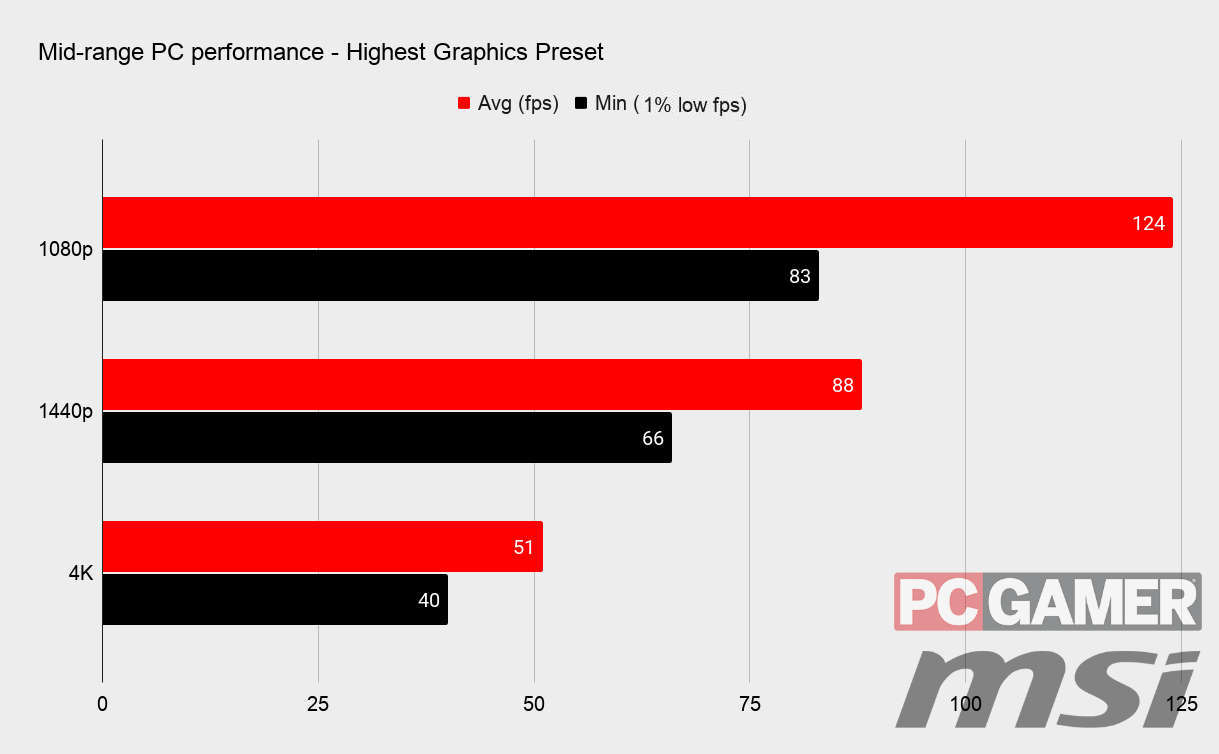
It was painfully clear from the juddering during gameplay that our mid-range rig was struggling at 4K, with most frames only just breaking the 40 fps mark as a minimum, and averaging out at 51 fps. That's to be expected from a game with such expansive, vegetation-heavy vistas, which will sadly render Days Gone for PC almost unplayable on highest settings, at higher resolutions, for those with an RTX 3060 or below. I would find my headshots frequently thwarted by frame-skip, and just rotating the camera was a real shock for this system.
The biggest gaming news, reviews and hardware deals
Keep up to date with the most important stories and the best deals, as picked by the PC Gamer team.
If you're only gazing at those lonely hills through a 1080p monitor however, a GeForce RTX 3060 Ti and Ryzen 5 5600X combo brings a pretty smooth experience to your desktop; the majority of the time it came out with over 80 fps, averaging at 124 fps. And at 1440p, 99% of the time it managed over 66 frames per second, averaging out at 88 fps.
So, sticking with QHD is probably your best resolution bet for a mid-range PC setup, if you're desperate to push those settings up to their max.
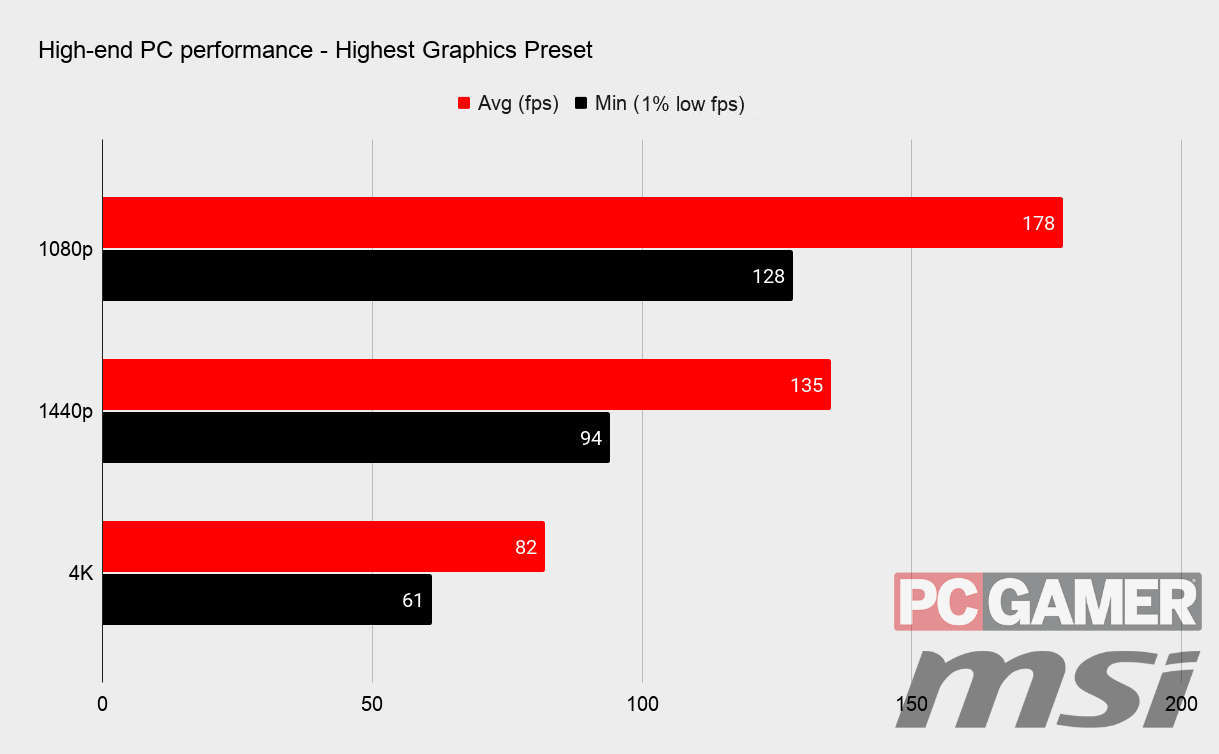
Contrastingly, our top dog—powered by an MSI RTX 3080 Gaming X Trio and AMD Ryzen 9 5900X—absolutely smashes Days Gone at all resolutions with settings maxed. Even at 4K, it averaged 82 fps, and dropped below 61 fps only 1% of the time. There's room for improvement, sure, but that means generally a machine like this will take a good beating from a game that puts gorgeous environment design at the forefront.
Suffice it to say this setup is overkill, and one would hope you weren't wasting all that graphic goodness with a 1080p monitor. But if you're partial to lower resolutions, you should be able to happily rag that Drifter Bike of yours around at just shy of 180 fps on average.
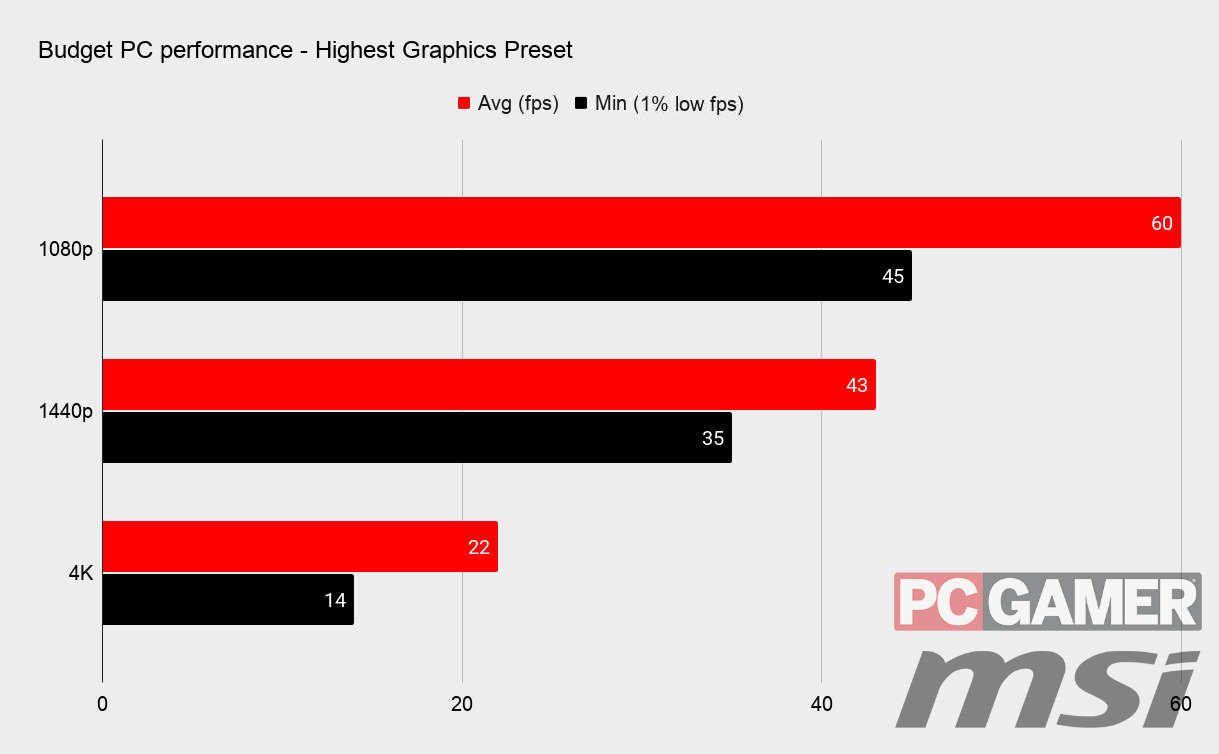
Then we have the budget build, powered by an MSI GeForce GTX 1650 Super Gaming X and Intel Core i5 10400F. The numbers say it all: this is one for the 1080p gamers only. Anything above that will eat your machine alive, like a freaker ripping into a fresh carcass. You're going to have to do some serious setting tweaks to get this one super smooth at FHD, let alone higher resolutions.
I'm gonna say it now, I have no idea how I managed to play through my benchmark mission with the budget rig chugging out max settings at 4K, without getting my ass handed to me. With a 22 fps average and most of the time only just surpassing 14 frames per second, it was like watching a slideshow of fluke after fluke.
Even at 1080p you're just about pushing a 60 fps average, with a 45 fps 1% low. It was just about playable, but it could cause issues through some of the more intense sections of the game. I haven't tackled a hoard head on yet, but I don't think I'd try it even at lower resolutions with the settings cranked, not on a budget machine.
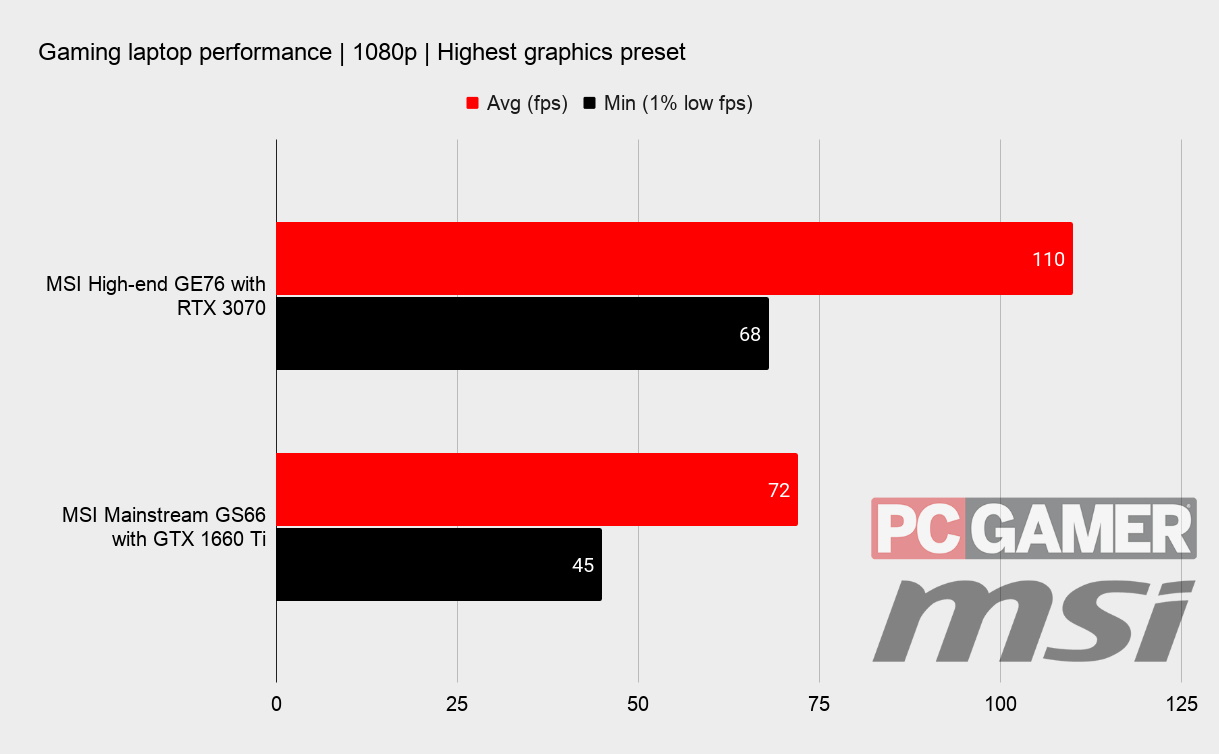
As our partner for these detailed performance analyses, MSI provided the hardware we needed to test Days Gone on different PC gaming hardware.
We've also tested on a pair of MSI gaming laptops to give an idea of mobile performance at their native screen resolutions of 1080p. The ~$999 MSI GF65 Thin, with its GTX 1660 Ti, scored a 72 fps average, with 1% lows of 45 fps. While our high-end, $3,000 MSI Raider GE76, complete with RTX 3070, managed to push out 110 fps averages, with 1% lows of 68 fps, putting it just below the performance of our mid-range rig.
Both certainly playable, but their portable GPUs do inevitably give them a disadvantage against their desktop variants. Still, it means the portable GTX 1660 Ti is able to keep Days Gone motoring along at its top settings.
Settings
So what's the most effective way to make those frames work harder? Beat them into submission with your rifle stock like the workers over at the Hot Springs camp? No, you're going to want to tweak the settings a bit, don't beat up your PC. Here's what the game's different graphical presets have to offer at 1440p, using our mid-range rig as yardstick.
We covered the game's performance in its highest graphics preset above at 1440p, and 88 fps is a more than acceptable score for a game that's so graphically intensive. But, provided you can handle some minor sacrifices to the beautification factor, there are some minor tweaks you can make for a much more buttery post-apocalyptic experience.
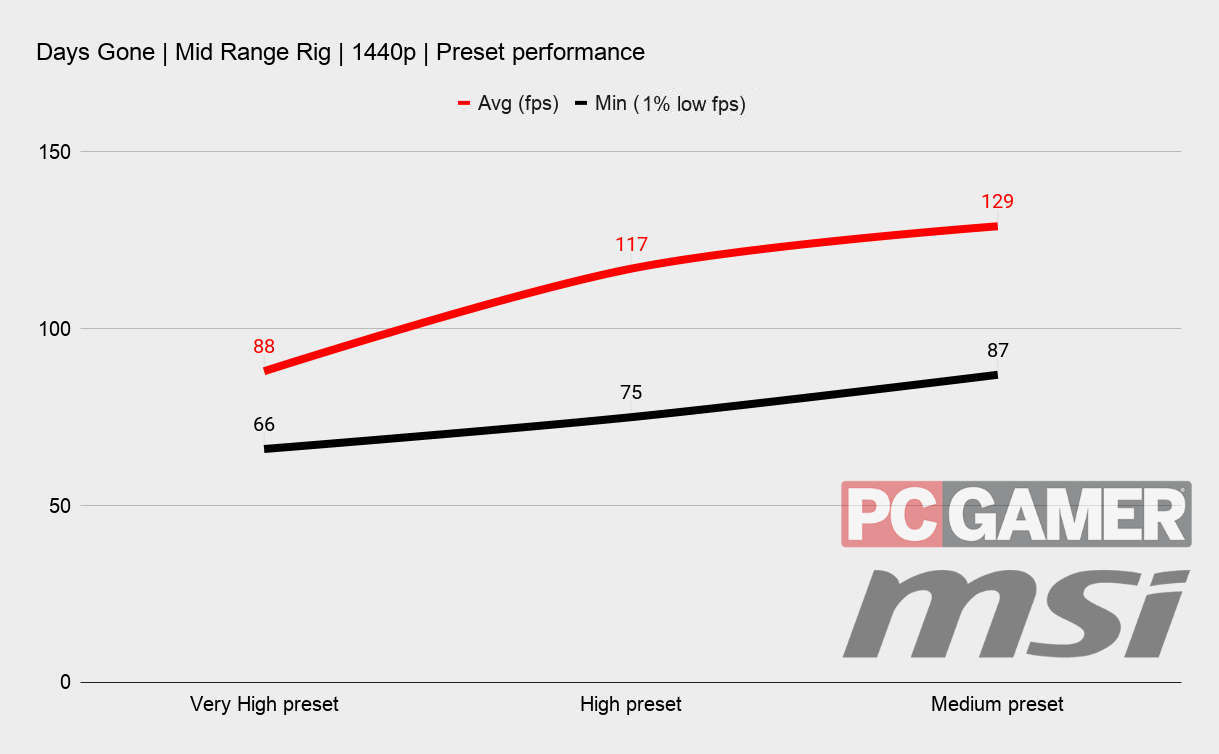
Days Gone has four convenient graphics presets: Very High, High, Medium and Low. I've only checked the top three, as I assume you don't want your game to look like a kid's potato stamp painting. And to get an extreme reading on each of the individual settings, I pushed each setting down from highest to lowest and calculated what percentage it boosted our mid-range PC's performance by. Here's what I found...
Just pulling back a step from Very High preset to High delivered a 28% performance boost, and genuinely still looked great. When I dropped everything down to the Medium preset, the frames shot up by another 10% or so, but the game was starting to look a little too cartoon-like.
The devs have managed to retain a lot of the believability in the High preset by simply switching everything down a notch, except for shadow quality. Once you start to diminish lighting and shadow, the realism factor drops significantly, but there's a cost to that realism.
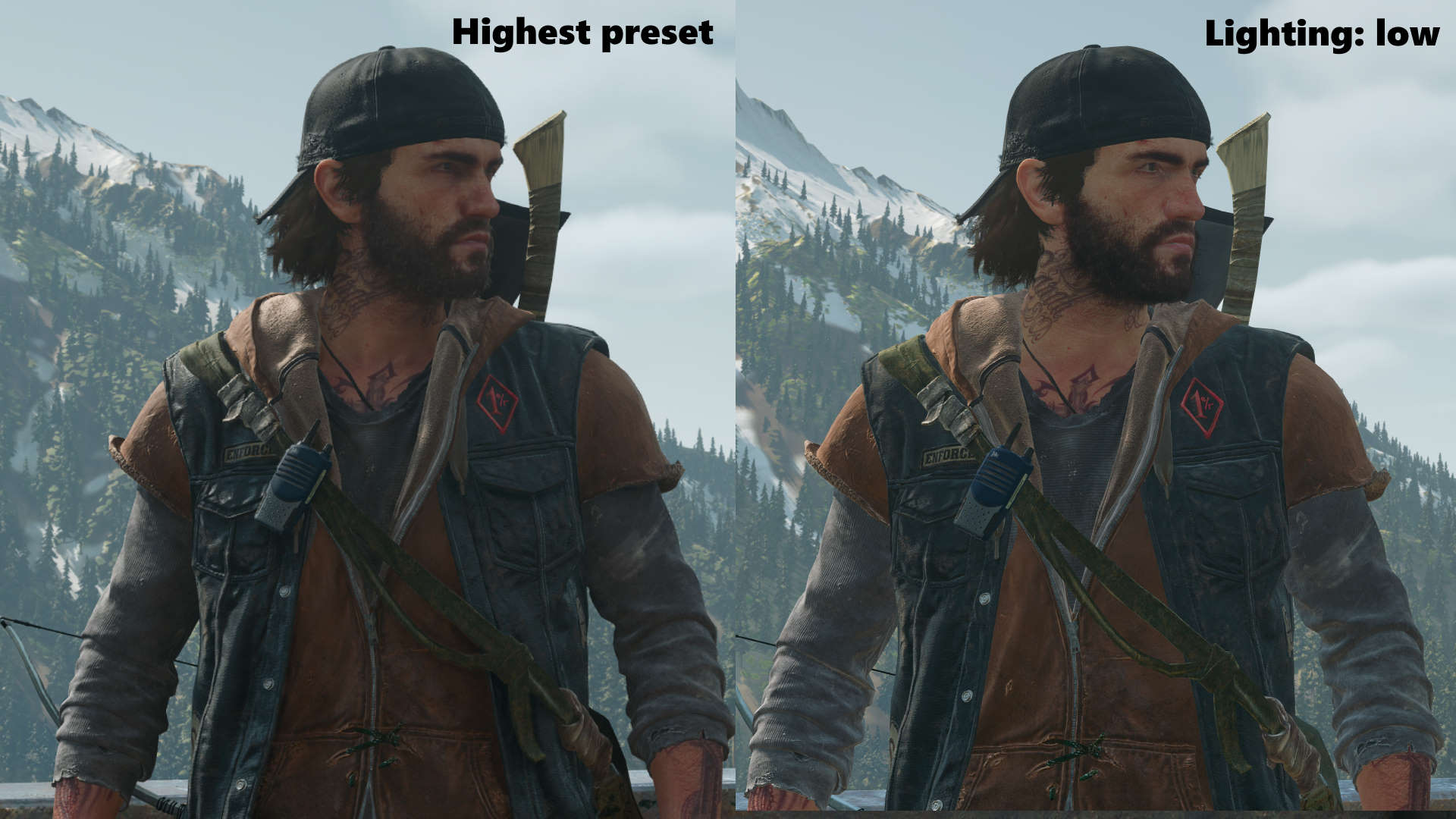
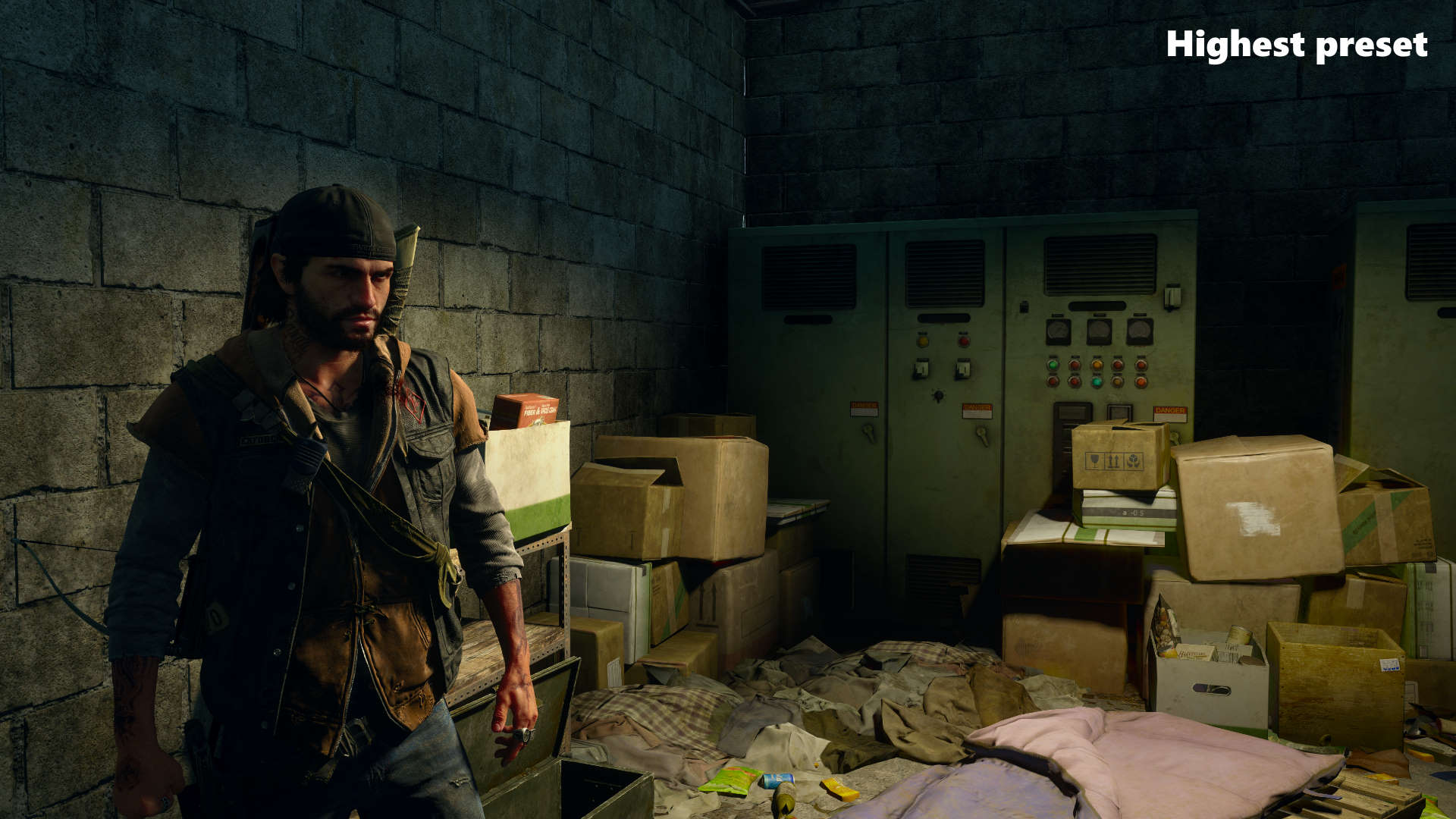
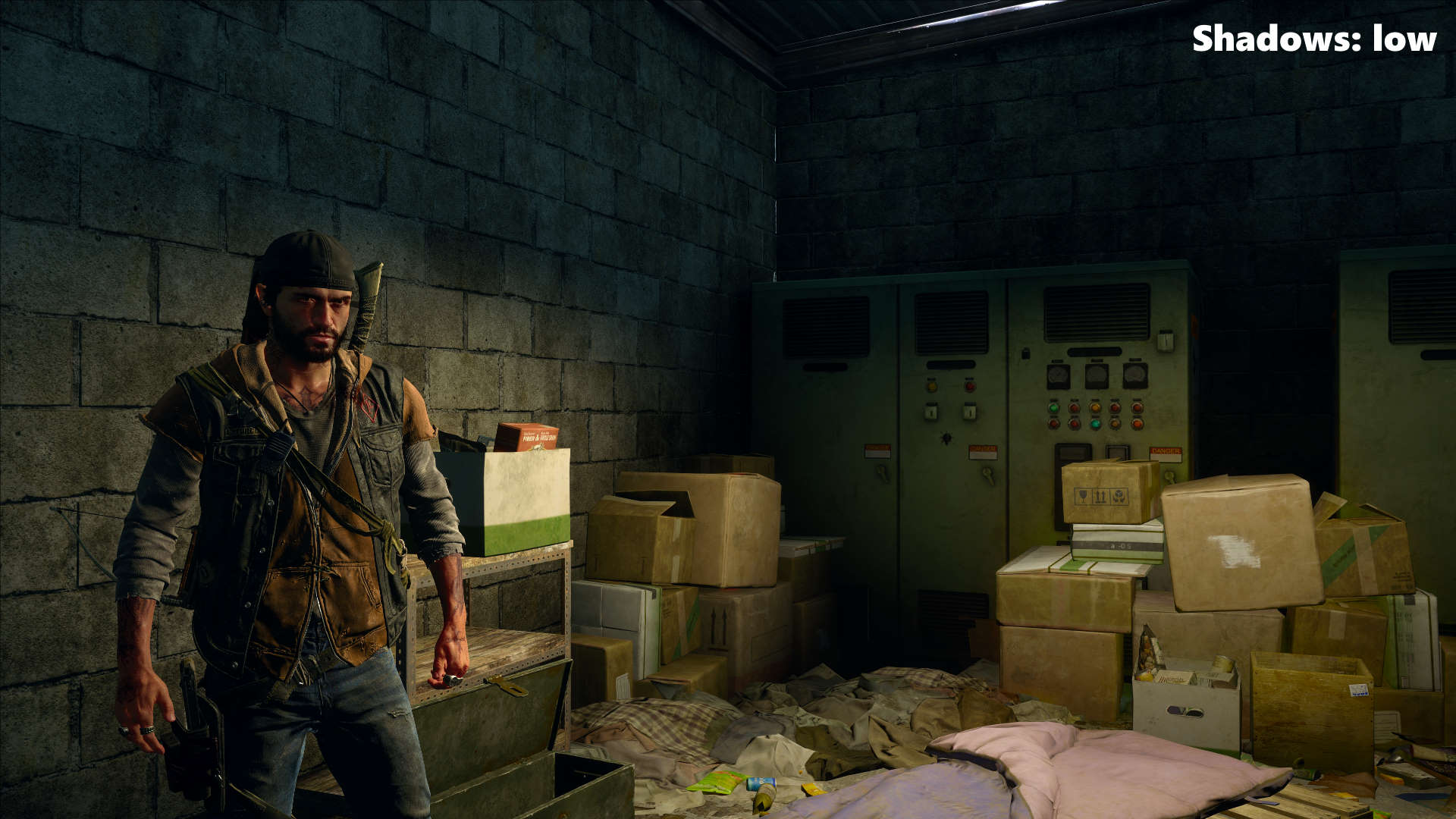
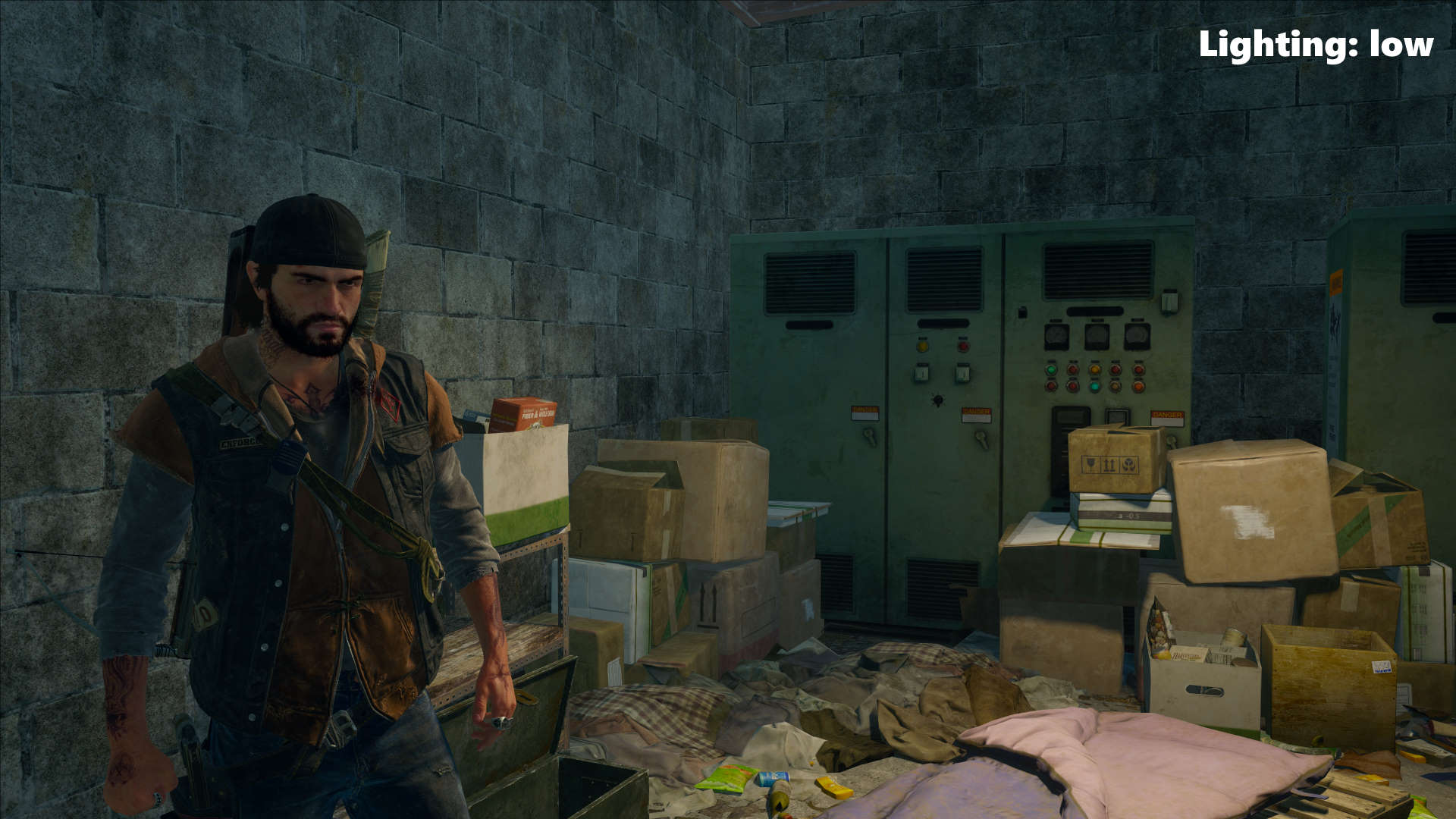
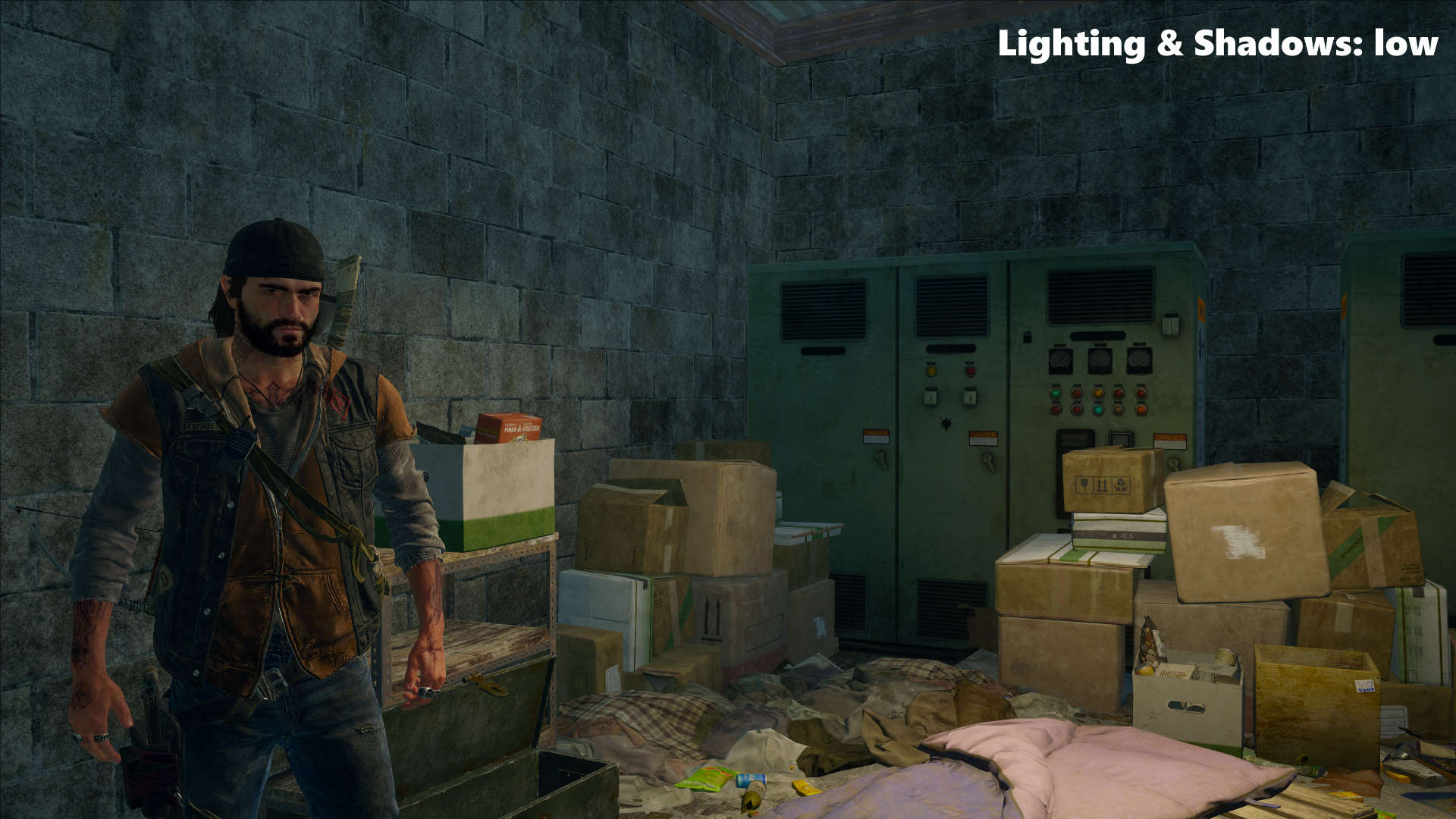
Shadow quality is one of the most essential settings that determines realism. It gives sharper shadows that move more accurately with animated meshes. With this setting lowered, shadows start to look like amorphous blobs, and at its lowest value, most meshes will cast no shadow whatsoever. We found by dropping shadow quality right down, it would only give about a 9% boost to your fps score, so this is one you can probably afford to keep cranked up.
Lighting, on the other hand, gives you a good 25% difference if you drop it down to zero. That's a significant boost to your frames, but doing so makes the game look super flat and otherworldly, plus Deacon loses some of that mysterious under-brow smoulder which is a bit sad. Still, lighting is so impactful that a medium value might be the way to go, especially if you're desperate to get more frames out of your game. Just please, don't jam both light and shadows down fully, unless you want to be having nightmares.
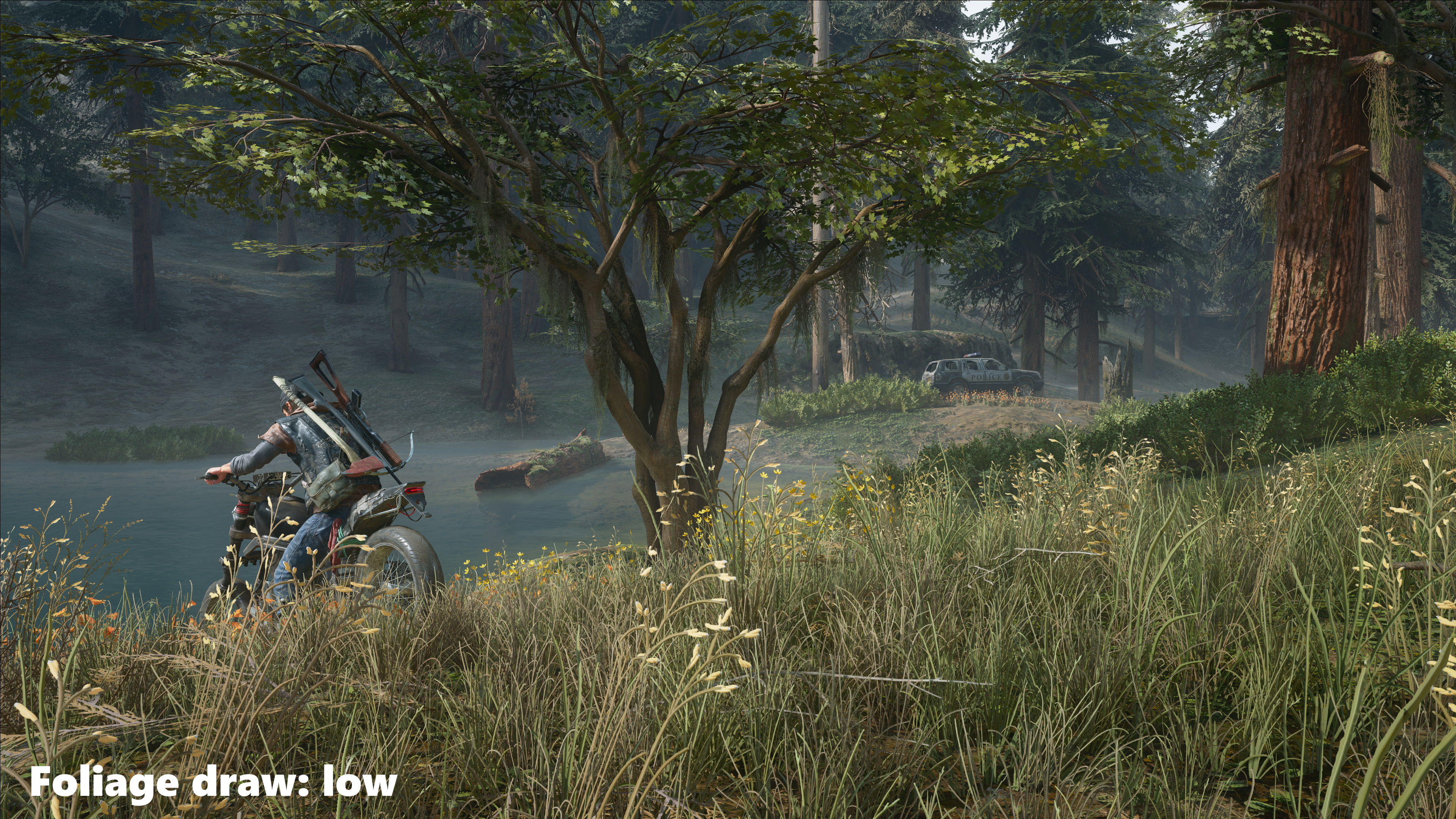
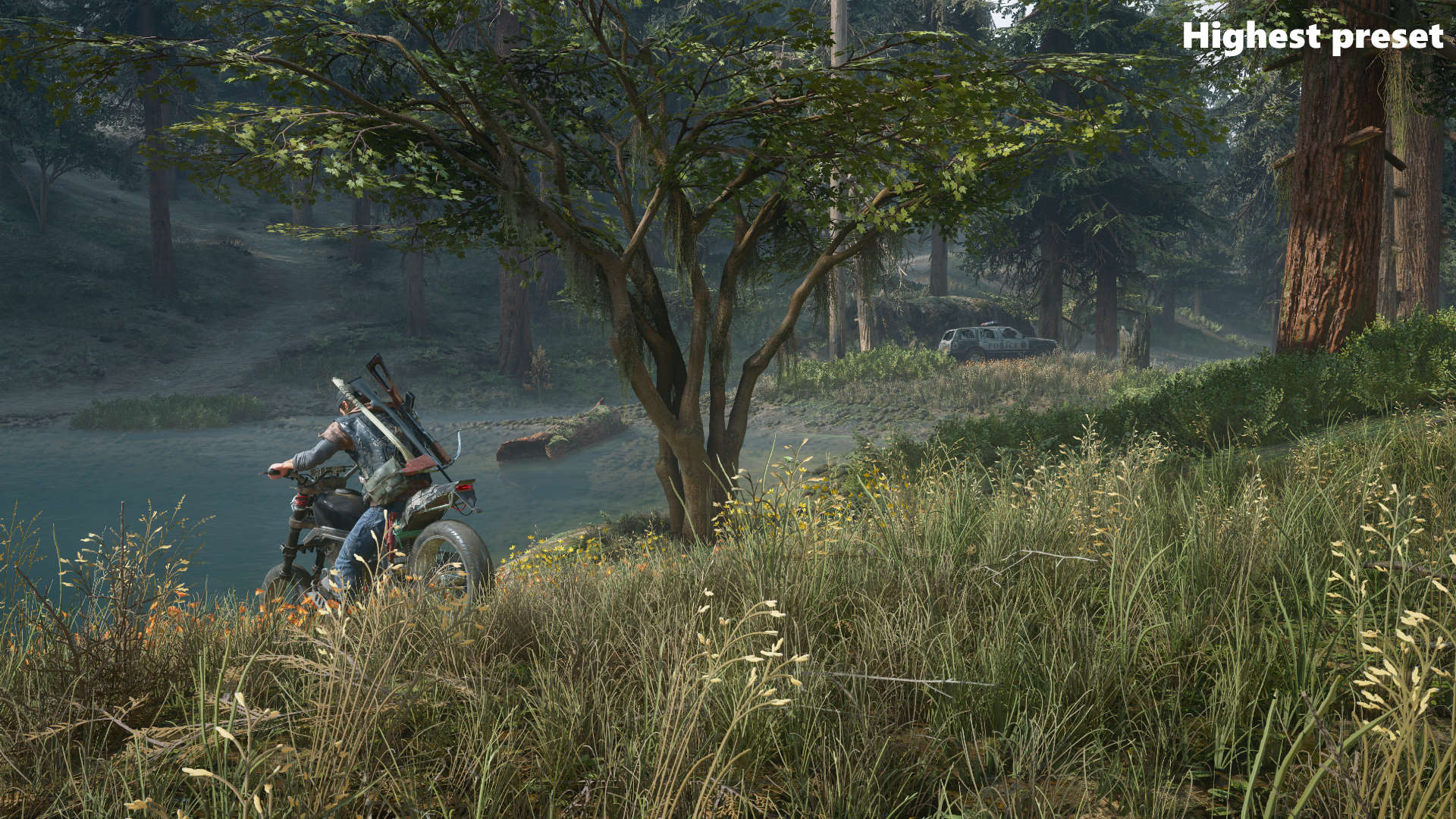
Another setting to look out for is foliage draw. This one determines how close you have to be to vegetation (and other assets like junk on the floor) before it gets rendered in the engine. Turned down to its lowest, the environment artists at Bend have managed not to make the place look like a barren wasteland. There are still enough trees and undergrowth to make it look believable when standing still, but the issue comes when you're hurtling across the map at speed. With trees popping in left, right, and center, it can be a little jarring.
With geometry at its lowest you gain a 7% performance boost, and it hardly affects the look of the game unless you're right up close checking out how spikey the floor junk is. Deacon and company don't turn into a mass of triangles, and the environment still looks great from the distance you'll be playing at, so it might be worth nerfing this one in the quest for more speed.
As for cloud and fog, I challenge you to find a comparable screenshot that will illustrate how turning cloud and fog down makes the game look measurably worse. Sure, keeping it set to max does give the game a slightly more eerie feeling, but only if you actually come across a whiff of fog. Clouds—both from smoke and those in the sky—are hardly affected visually, and you get a good 9% performance increase by knocking the volumetric numbers down.
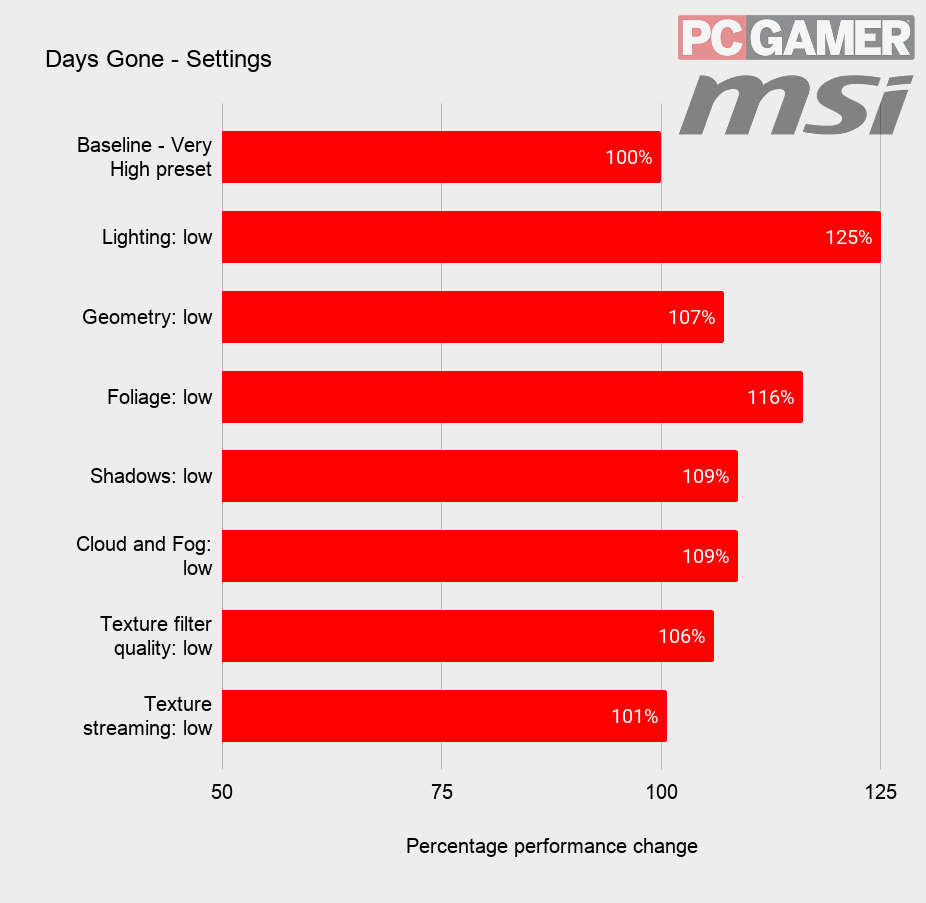
Days Gone on PC also comes with a FOV slider that wasn't in the PlayStation version. If you're going to make the most of it, remember it's also likely to knock your fps down a tad, as the game will have more to render at any one time. It's likely you can afford to turn it up a bit if you've managed to tweak the other settings to allow for some headroom.
Conclusion
It can be difficult to find a good middle-ground for games that pride themselves on gorgeous environment design. You feel like there's so much beauty you'll miss out on if you turn the graphic settings down even a tad. Thankfully we found a couple of settings that are well worth trashing for a mild performance boost, without any loss of fidelity, as well as a couple of options to play around with depending on your personal preference.
First off, you can drop geometry down to low because it doesn't affect the things you'll be inspecting up close. Together with Cloud and Fog—which only removes the atmospherics in a handful of situations—it should give you just under 20% performance boost, without impacting the game's overall look. You won't get the spooky driving through the fog effect, but how often does that happen anyway?
Then have a play around with lighting. Lowering the lighting value will give the biggest boon, but will make the game feel flat and alien at the lowest values, so you might want to bolster it with a slightly lower foliage draw, if you can deal with trees appearing out of nowhere that is. I'd say only drop shadows down if you really need to; generally higher values shouldn't make too much of a difference performance wise, but it'll ensure your game doesn't look off.
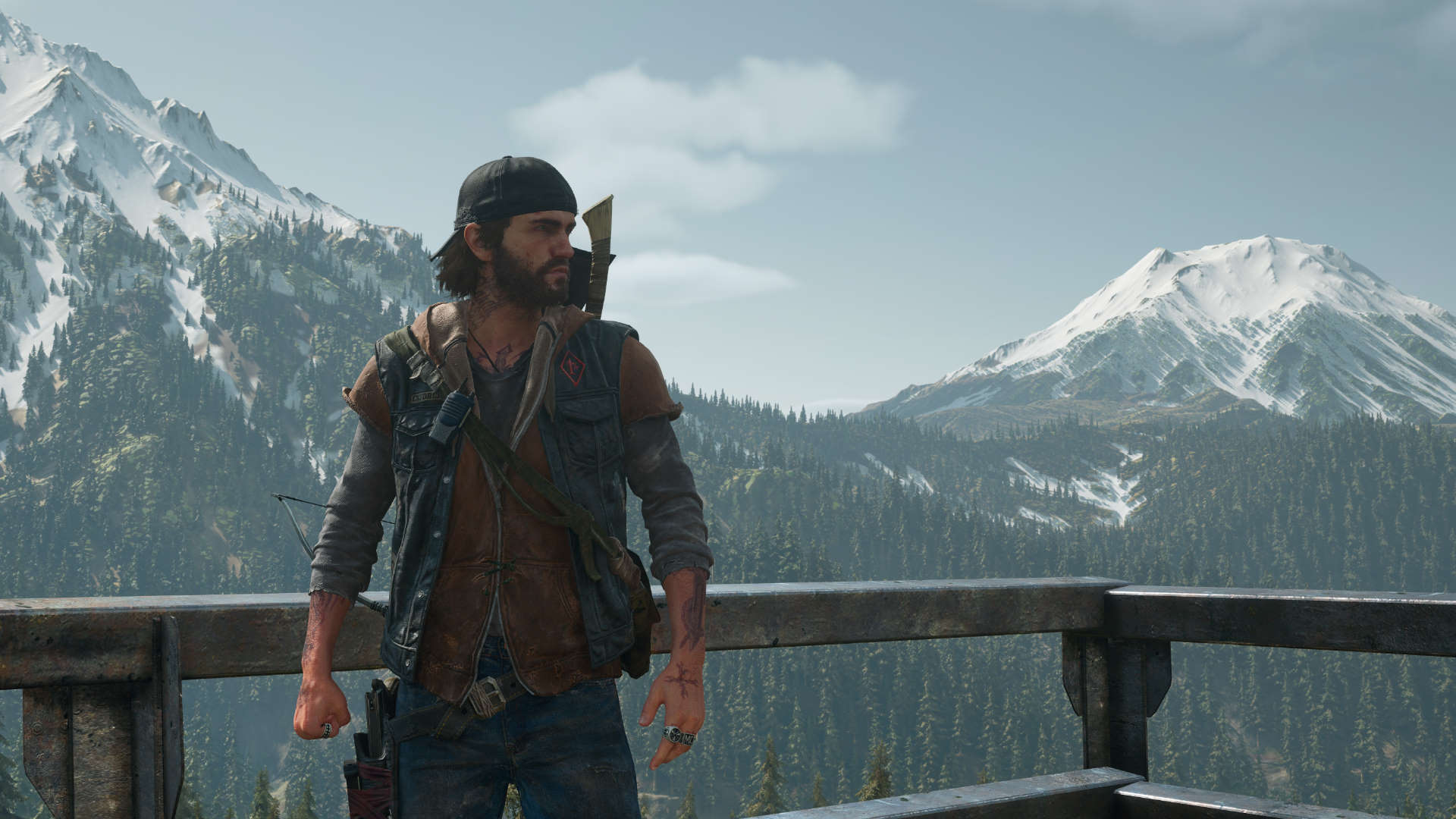
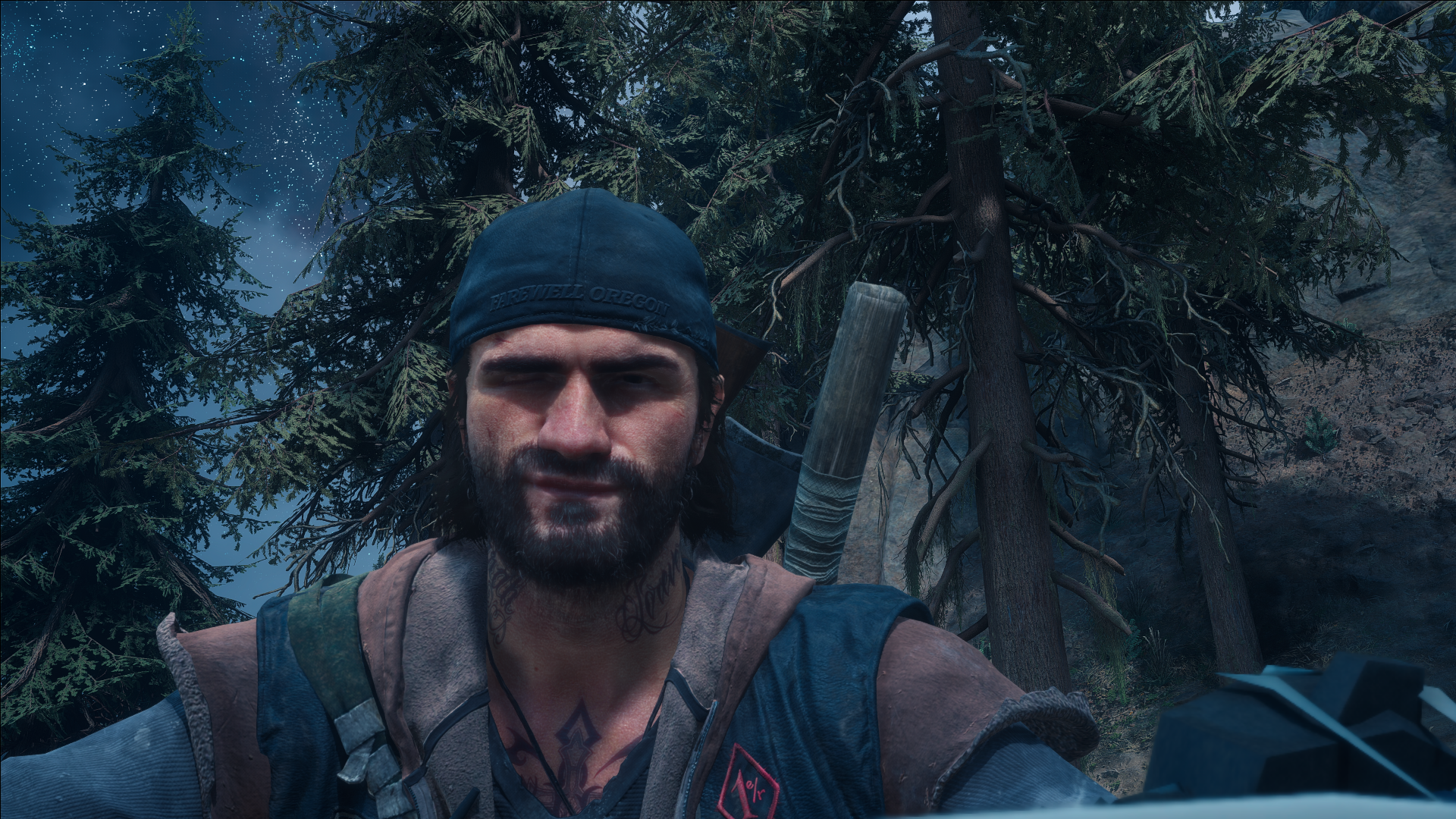
All in all the PC port of this initially PlayStation exclusive game has been done pretty well. Unfortunately there's no option for ray tracing to get that post-apocalyptic landscape glowing, or the addition of DLSS to bump up your Nvidia frame rates.
The settings that are there, though, have been boiled down to the core, practical ones, which made the process of tweaking graphics easy—not as overwhelming as something like Resident Evil Village.
With just a few little nerfs to your graphics settings, you can have Days Gone running pretty smooth on anything as low-spec as a GTX 1650 Super at 1440p, without the feeling you're watching a horror themed slideshow of those gorgeous Oregon mountains. That's a big win for Sony's Bend Studio.

Screw sports, Katie would rather watch Intel, AMD and Nvidia go at it. Having been obsessed with computers and graphics for three long decades, she took Game Art and Design up to Masters level at uni, and has been rambling about games, tech and science—rather sarcastically—for four years since. She can be found admiring technological advancements, scrambling for scintillating Raspberry Pi projects, preaching cybersecurity awareness, sighing over semiconductors, and gawping at the latest GPU upgrades. Right now she's waiting patiently for her chance to upload her consciousness into the cloud.

